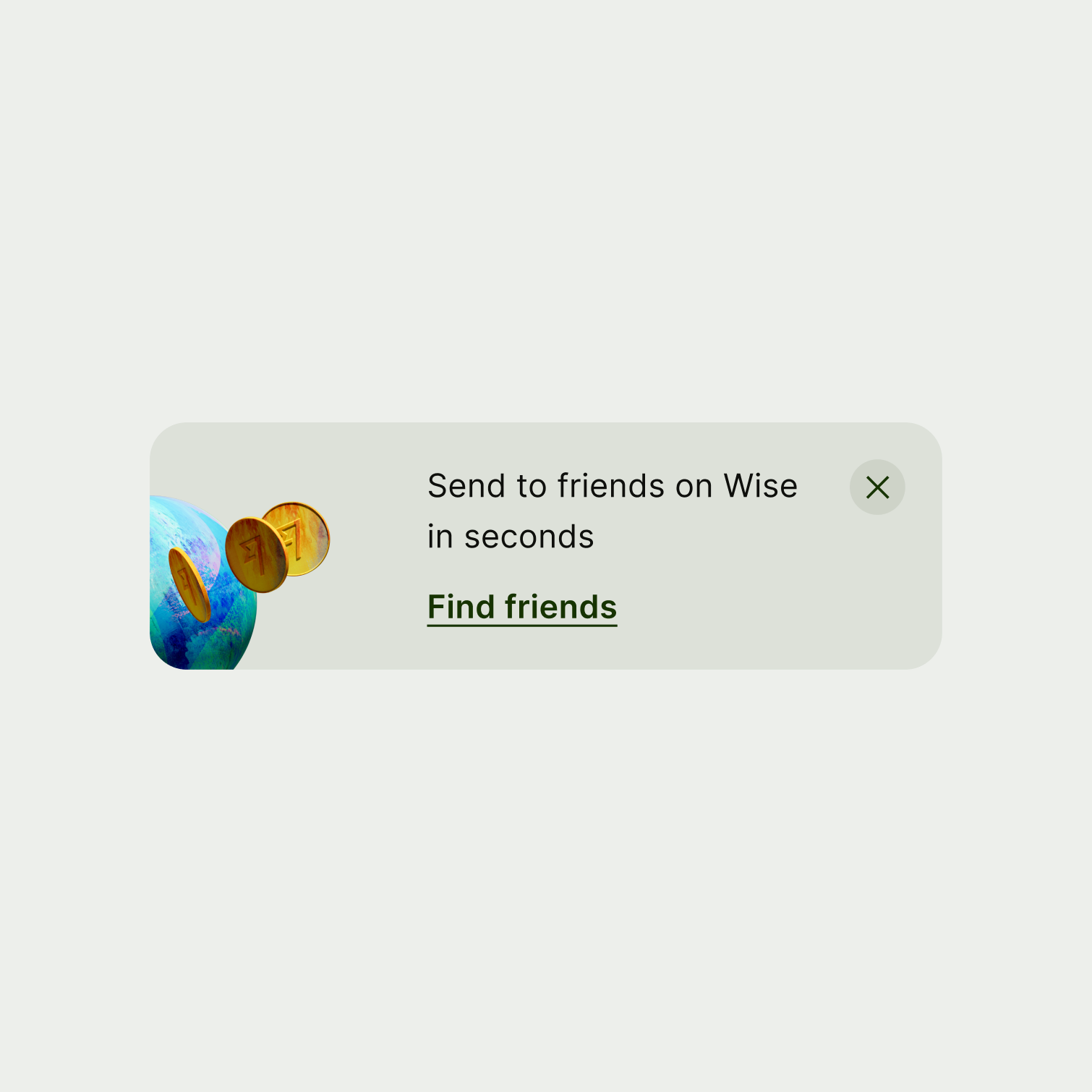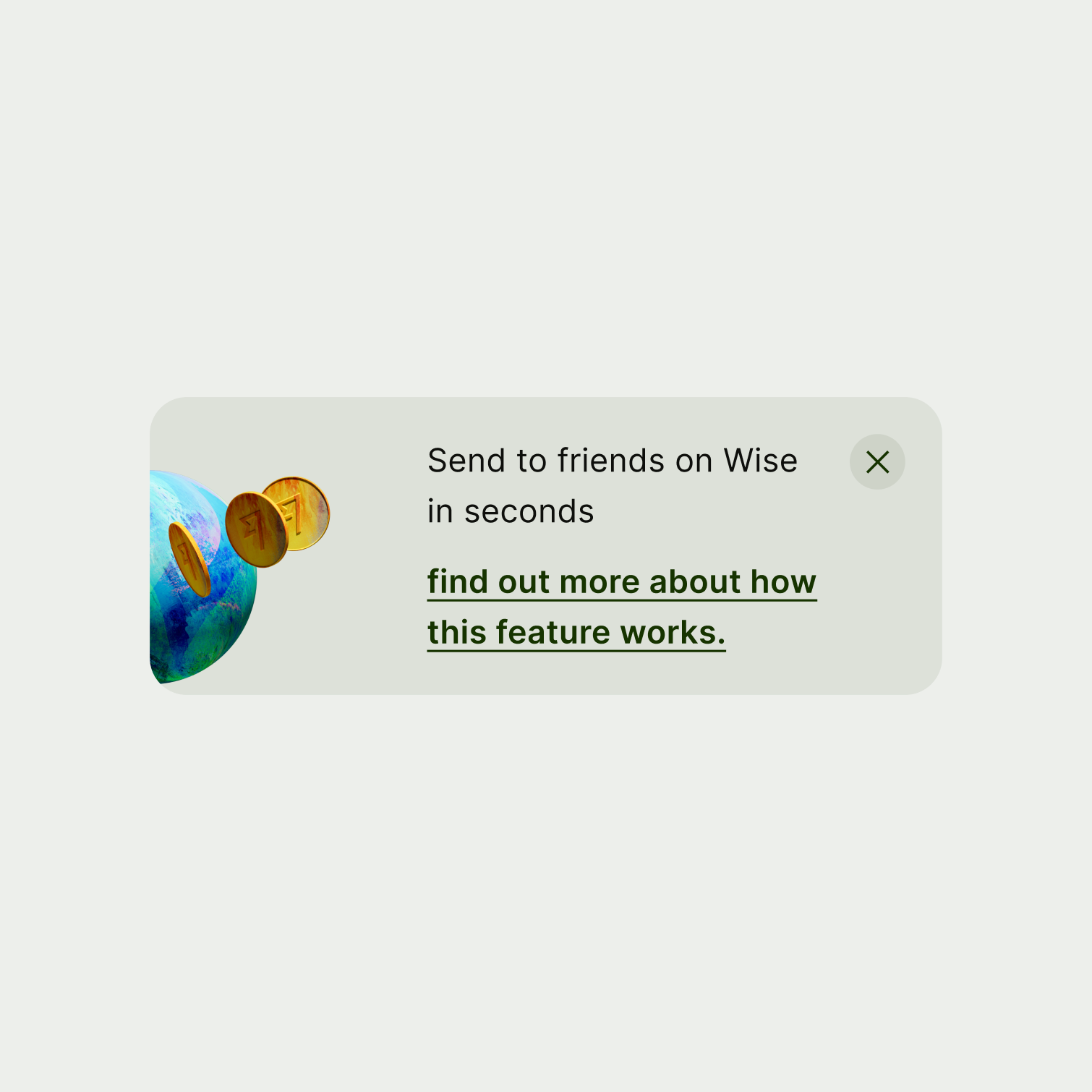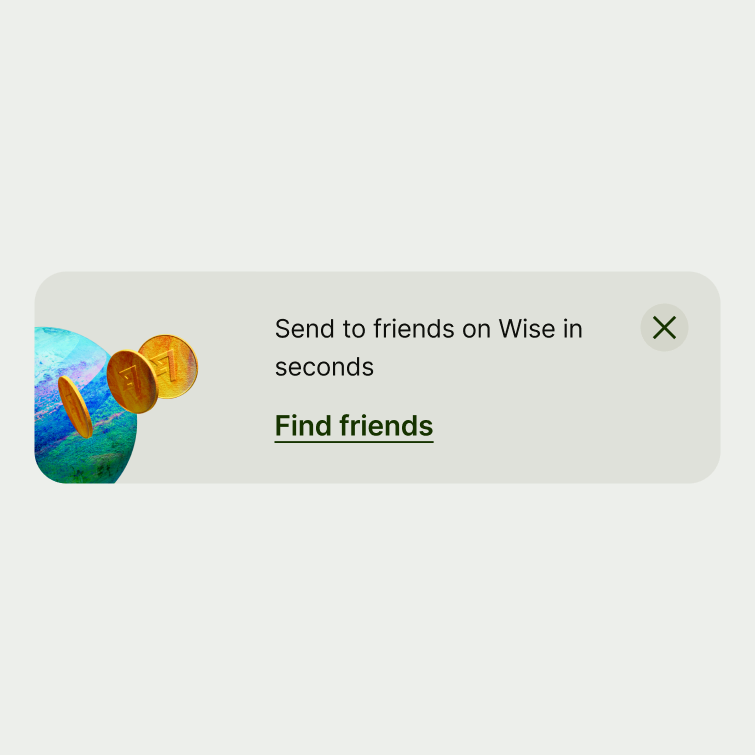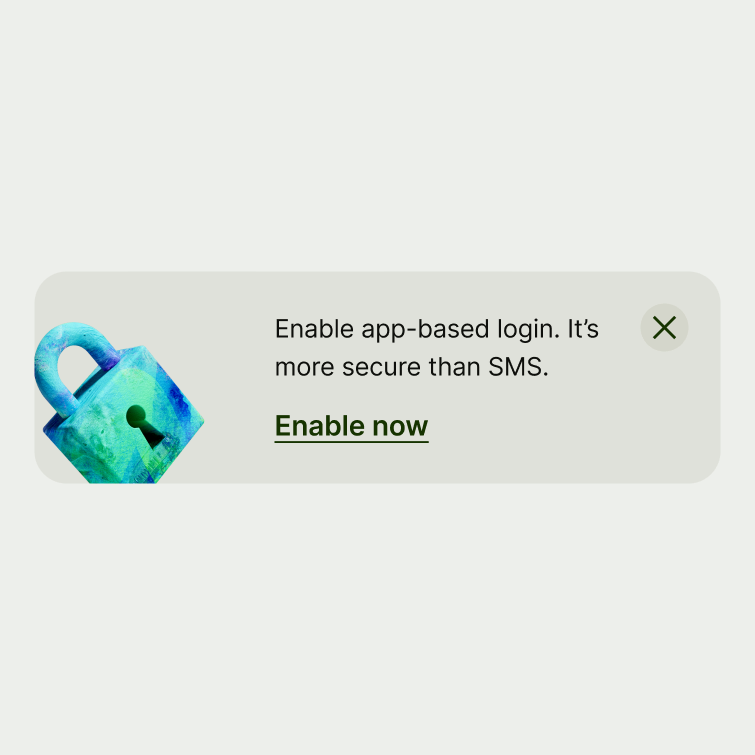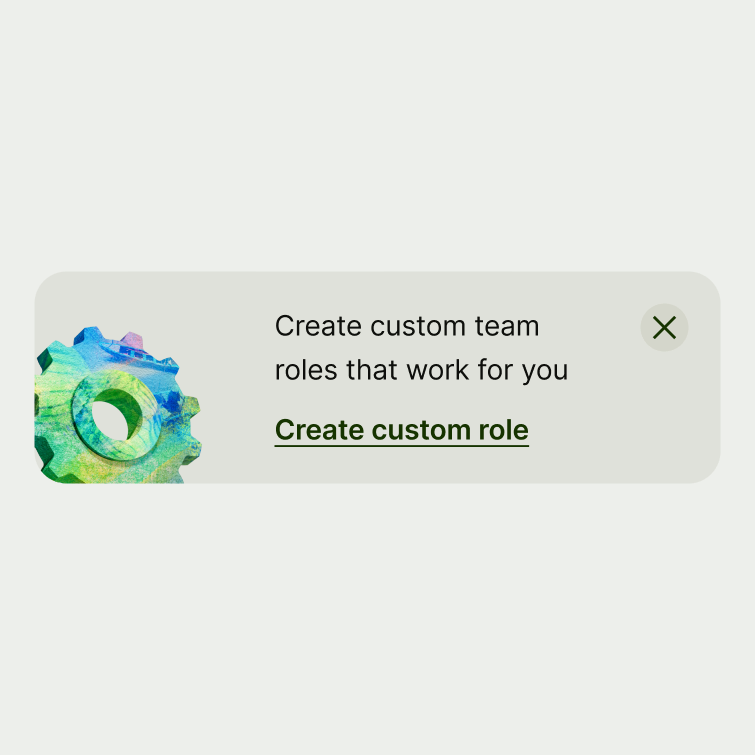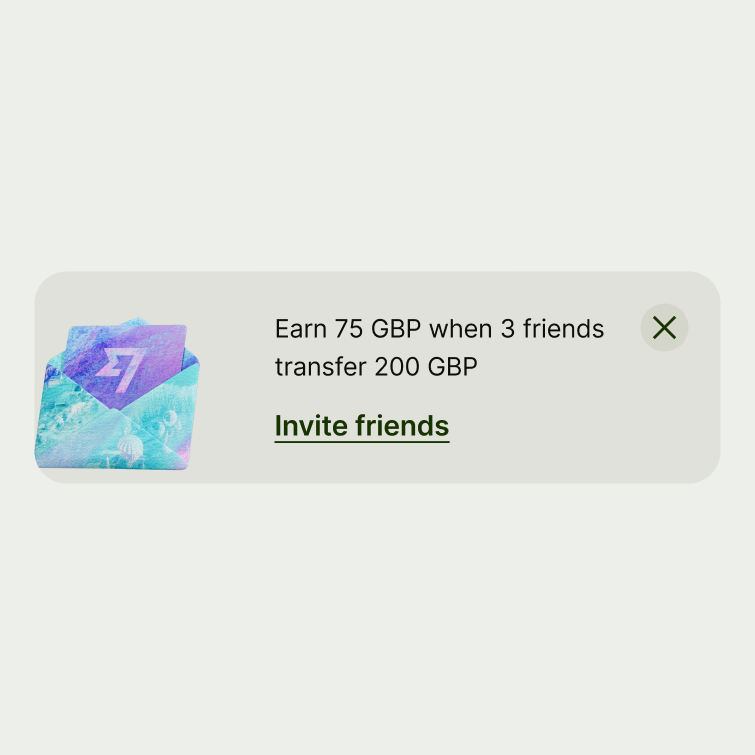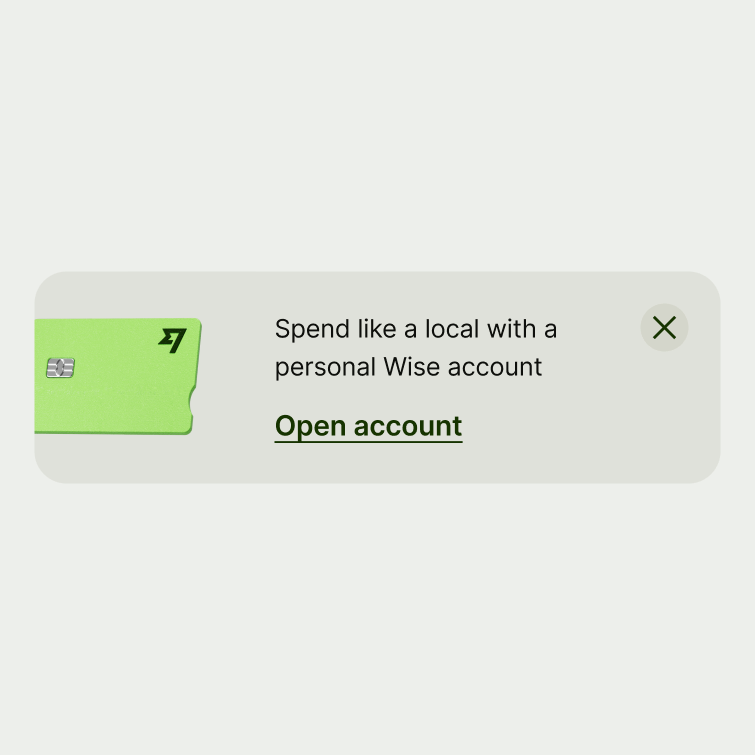Nudges are for suggesting new features or actions, not for communicating negative or critical information. So while nudge copy should be short and sweet, it's ok to add some energy and colour. Try to have maximum impact, with the minimum amount of words.
See our tone of voice.
Title
Title copy should:
start with a verb
describe the action the user might like to take
include a clear benefit for the user — like making something quicker, safer, or cheaper for them
be short (4–7 words)
capitalise the first letter of the first word
not have a full stop
If you can't fit the action and the benefit in one sentence, you can include a second sentence. Just make sure it:
explains the benefit to the user
includes full stops as there are 2 sentences
is short — no more than 6 words

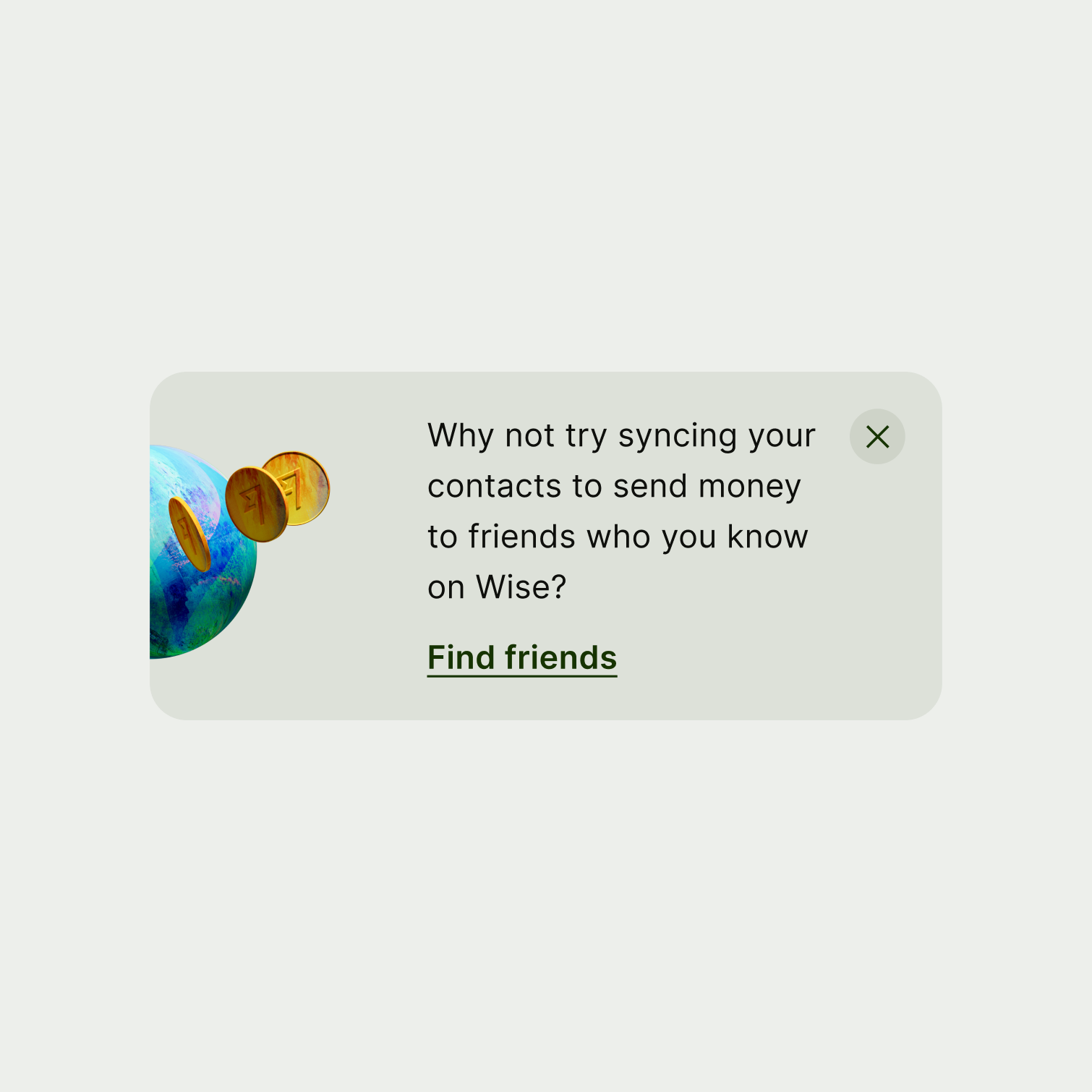
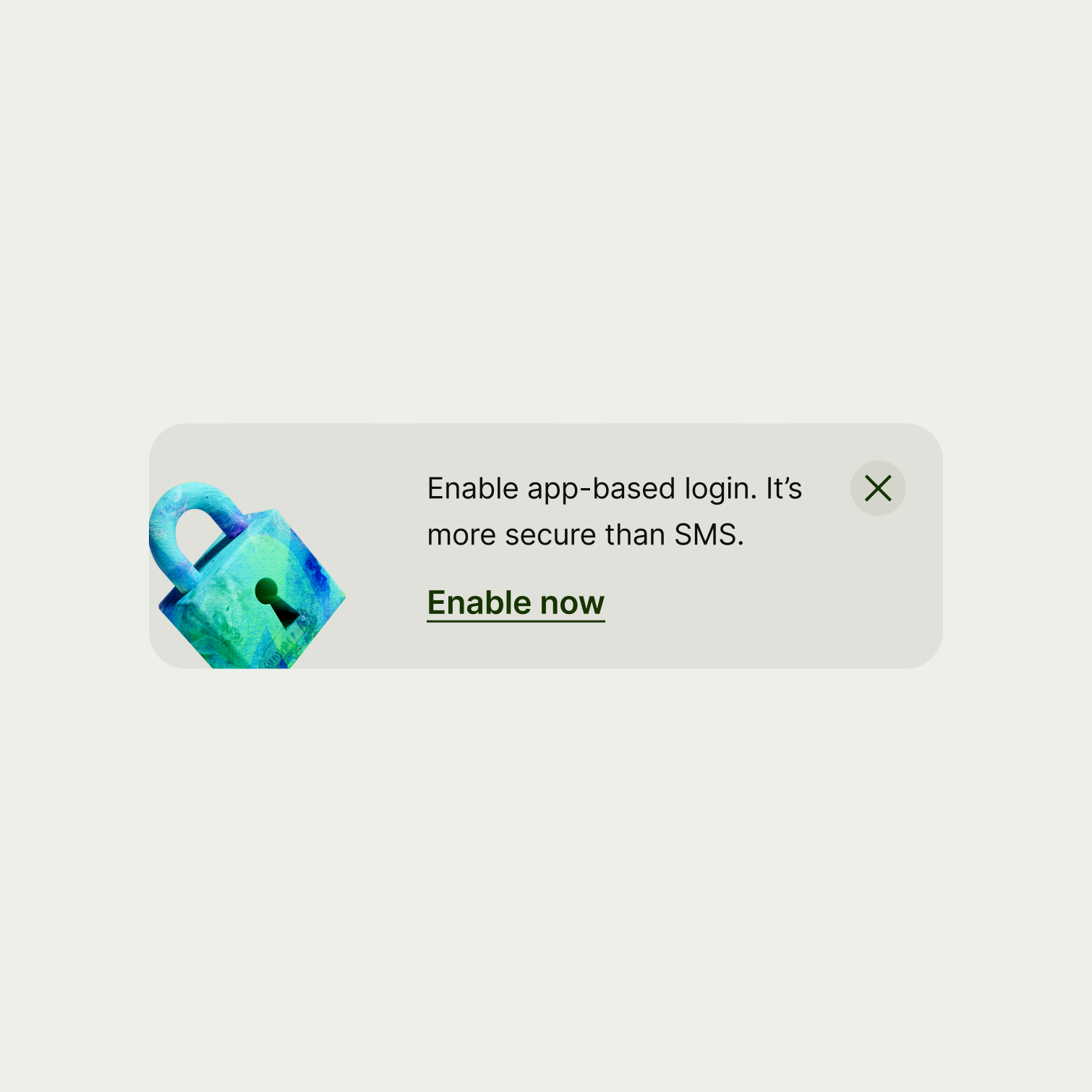
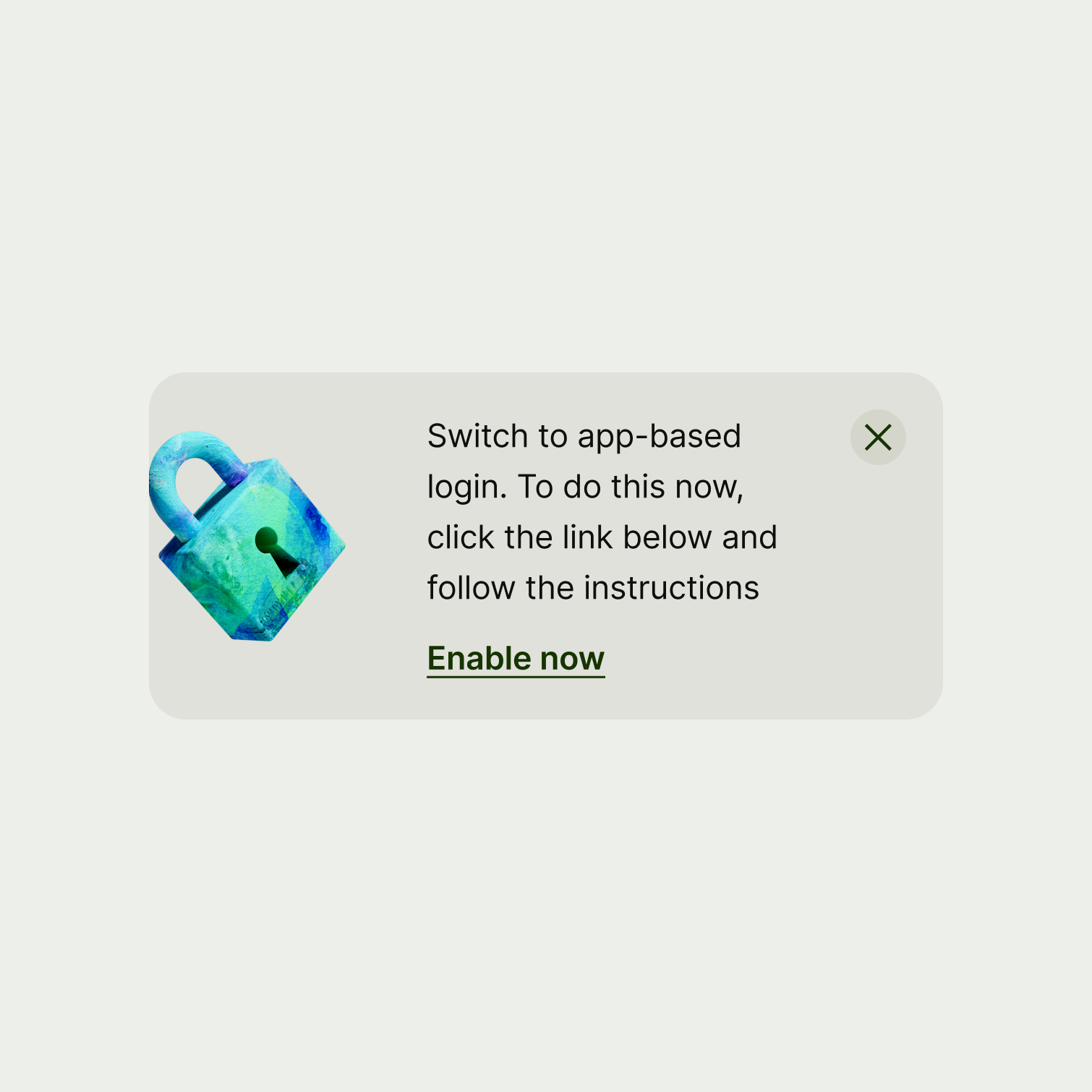
Action
Action copy should:
start with a verb — like ‘add’, ‘enable’, ‘find’
describe a specific action the user will take — it shouldn't be vague
be no more than 3 words
capitalise the first letter of the first word
have no full stop
